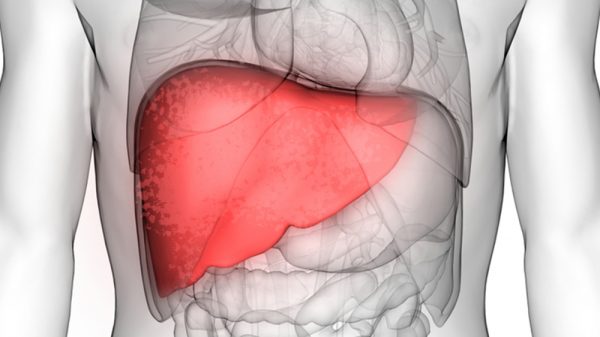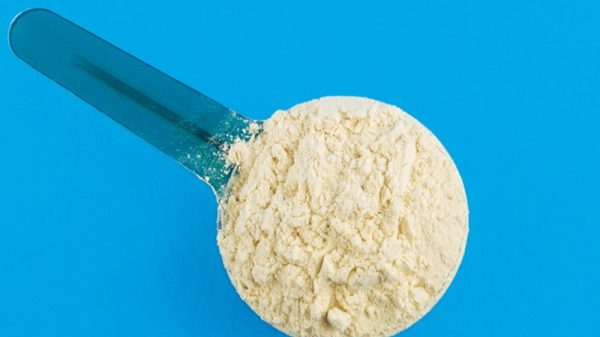Being diagnosed with alcoholic fatty liver disease is scary. However, if you’ve just received this diagnosis, rest assured that there are steps you can take to reverse the condition. With the right intervention, fatty liver disease can resolve. Are you struggling with alcoholic fatty liver disease and alcohol abuse disorder? You’ve come to the right place for answers. Read on to find out tips and strategies for recovering from alcoholic fatty liver as well as signs your liver is healing.
What Is Alcoholic Fatty Liver Disease?
Let’s take a look at what it means to have alcoholic fatty liver disease. Fatty liver disease, or hepatic steatosis, is a condition characterized by the accumulation of fat particles within liver cells. Nonalcoholic fatty liver disease and alcoholic fatty liver disease are the two main types of the condition and are distinguished by the factors contributing to the disease-causing mechanisms. Nonalcoholic fatty liver disease is linked to obesity and metabolic syndrome, while alcoholic fatty liver disease is linked to chronic and excessive alcohol use.
How Does Alcohol Use Cause Fatty Liver Disease?
The liver is the largest and one of the most important organs in the body. The liver can be viewed as the liver’s chemistry lab and is responsible for carrying out metabolic processes and producing bile, clotting factors, and proteins. Importantly, the liver is responsible for breaking down substances we ingest, such as medications and alcohol.
Alcohol is a toxin that must be chemically broken down in the body. The liver is responsible for metabolizing and detoxifying alcohol. Binge drinking or consuming large quantities of alcohol overwhelms the liver, leading to inflammation and oxidative stress. When the liver experiences oxidative stress, waste in the form of reactive free radicals accumulates and inflicts damage on cells. Chronic ingestion of alcohol inflicts continuous oxidative stress and doesn’t allow the liver to recover. Over time, this leads to fat build-up in the liver and fatty liver disease.
It’s important to keep in mind that there are other conditions that may contribute to fatty liver disease and exacerbate liver damage. These conditions include:
- Viral hepatitis infection such as hepatitis A, hepatitis B, and hepatitis C
- Overdose with acetaminophen, which is found in over-the-counter medications like Tylenol
- Autoimmune hepatitis
- Congenital diseases like Wilson’s disease and hemochromatosis
The Progression of Alcoholic Fatty Liver Disease
Alcoholic fatty liver disease can progress to more serious forms of alcohol-related liver disease that compromise liver function.
Alcoholic fatty liver disease eventually causes a condition called steatohepatitis or alcoholic hepatitis, in which liver tissue becomes actively inflamed. Chronic steatohepatitis impairs liver function, causes damage, and results in the production of fibrous tissue around liver cells. When fibrotic tissue begins to accumulate, the condition is called liver fibrosis. Over time, fibrosis leads to cirrhosis, at which point soft, healthy liver tissue has become scarred, hardened, and lost function. Continued damage to the liver leaves you at a higher risk of developing liver cancer or hepatocellular carcinoma.
Cirrhosis can eventually lead to end-stage liver disease and liver failure, at which point the liver has lost all function. The only treatment that exists for liver failure is liver transplantation. During a liver transplant, surgeons remove diseased liver tissue and replace it with healthy, functioning liver tissue from a donor.
Signs and Symptoms of Alcohol-Related Liver Disease
While you may not experience any symptoms in the early stages of alcoholic fatty liver disease, signs and symptoms arise as liver disease progresses.
- Abdominal pain: If you have alcoholic fatty liver disease, you may experience liver pain. The liver pain area is typically the upper right quadrant of the abdomen. If you are a heavy drinker, upper abdominal pain may be a warning sign that your liver health is deteriorating.
- Nausea and vomiting: Individuals with liver disease may experience digestive symptoms such as nausea and vomiting.
- Jaundice: Jaundice, which is the yellowing of the skin and whites of the eyes, arises as bilirubin accumulates in the body as a result of deteriorating liver function. Excess bilirubin causes a yellow hue in the skin.
- Fatigue and weakness: The liver is one of the body’s most important organs and is responsible for processing and detoxifying chemicals we ingest. When liver function is impaired, your body is under stress and may experience fatigue and weakness.
- Varices: Varices are bulging blood vessels and arise as a result of blocked blood flow somewhere else in the body. Esophageal varices are commonly seen in individuals with advanced liver disease, like cirrhosis of the liver.
- Weight loss and muscle wasting: Weight loss and muscle wasting are common symptoms of liver cirrhosis, when the liver is unable to carry out metabolic processes normally. You may experience unintended weight loss and weakness.
- Hepatic encephalopathy: Hepatic encephalopathy is a complication of late-stage liver disease, when the liver is severely damaged and experiences severe loss of function. When the liver can’t do its job, toxins build up in the bloodstream and reach the brain. Hepatic encephalopathy causes symptoms like seizures, uncontrolled movements, personality changes, and extreme anxiety.
- Ascites and leg swelling: Liver disease puts stress on the portal vein, which is the primary vein that carries blood through the liver. When blood and fluid flow is restricted, blood pressure in the portal vein increases, and fluid may accumulate in the abdomen and the lower extremities and cause significant swelling.
- Abnormal blood tests: A yearly physical may reveal underlying health problems before they become apparent. This is absolutely the case with alcoholic fatty liver disease. Your physician may notice elevated liver enzyme levels on a blood test, signifying that the liver is inflamed.
- Abnormal medical imaging tests: If liver disease is suspected, your physician may order medical imaging tests to get a better idea of the health of your liver. Imaging tests can reveal the presence of excess fat, liver enlargement, scar tissue, inflammation, growths, and other abnormalities.
Tips for Recovery from Alcoholic Fatty Liver Disease
Can you live without a liver? it is impossible to live without a liver, which is why it’s so important to protect healthy liver tissue. Are you wondering how to cleanse your liver and reverse alcoholic fatty liver disease? Lifestyle changes and a healthy diet play a significant role in mitigating alcohol-related fatty liver disease.
1. Stop Drinking Alcohol
Excessive alcohol consumption is a key risk factor for developing fatty liver disease in the first place. As a result, eliminating alcohol from your lifestyle is vital for reversing alcohol-induced fatty liver disease. However, for individuals who are dependent on alcohol, this is much easier said than done. Alcohol abuse disorder and alcoholism are highly complex diseases that require multidisciplinary and integrated treatment plans. Ongoing treatment and support are key for reversing fatty liver disease and preventing progression.
Achieving and maintaining sobriety is complex and is a multistep process.
- Detoxing from alcohol: The first step in eliminating alcohol from your diet is detoxing from alcohol. If you are physically dependent on alcohol, it’s extremely important to detox from alcohol in a methodical and medically sound way. Do not quit alcohol cold turkey; this can result in serious and sometimes life-threatening symptoms. Instead, slowly decrease your alcohol intake each day. It’s always a good idea to seek medical advice and guidance throughout the detox process to ensure that you’re protecting your health.
- Health care: Both mental and physical health care are important when recovering from alcohol abuse. A mental health care provider can help you understand your relationship with alcohol while helping you work through any issues you may be experiencing. Plus, alcohol abuse is often co-occurring with mental health conditions, which can be identified and treated by a mental health care provider. Your physician can ensure that you are taking care of your body and supporting your physical health during recovery from alcohol abuse.
- Support groups: Support groups like Alcoholics Anonymous can help you stay accountable in the recovery process. You may meet other like-minded people that you can trust and lean on when you feel inclined to start drinking again.
- Establishing new habits: When you quit drinking, you will likely have a lot of free time that was previously occupied by drinking activities. Filling this free time with new habits will help you manage cravings and feel grounded while you recover.
2. Getting Optimal Ratios of Essential Amino Acids
Amino acids are the smallest components of protein, chemically binding together to form whole protein particles. The body requires amino acids for nearly all biological processes and mechanisms, including the synthesis of muscle tissue, connective tissue, neurotransmitters, and hormones. Nonessential amino acids can be produced by the body as needed, while essential amino acids must be obtained from dietary sources on a daily basis.
In a study published in Nutrition, researchers found that essential amino acid supplementation was associated with decreased liver fat levels, in comparison to the control trial. (1) Further, in an Italian study published in the International Journal of Immunopathology and Pharmacology, researchers found that essential amino acid supplementation helps repair alcohol-induced liver damage in rat models. (2)
The branched-chain essential amino acids – leucine, isoleucine, and valine – have also been shown to have beneficial effects on liver disease. Research published in Translational Gastroenterology and Hepatology describes how branched-chain amino acids have a protective effect on the liver by supporting liver cell proliferation and slowing down cancer growth. (3)
Moreover, ensuring that you’re getting optimal ratios of essential amino acids on a daily basis can help counteract muscle wasting, which is associated with worsening cirrhosis and poorer health outcomes of individuals with cirrhosis.
How can you ensure that you’re getting optimal ratios of essential amino acids each day? Eating complete, high-quality animal proteins like lean meats, fish, and low-fat dairy supply balanced ratios of essential amino acids. On the other hand, there are no vegetable proteins that are complete proteins. So, if you follow a plant-based diet, be sure to consume various vegetable proteins throughout the day to get the essential amino acids you need. Supplementation is an easy way of ensuring that you’re getting the essential amino acids you need to support your metabolism and liver. Try adding an essential amino acid supplement to your coffee, tea, smoothies, and water.
3. Nutrient-Rich Diet
There is currently no drug that exists that is designed to specifically target fatty liver disease. In addition to essential amino acids, the foods you eat strengthen your body’s mechanisms and empower the liver and body’s natural healing processes. Here are a few important elements of a liver-friendly diet that supports healing:
- Fruit and vegetables: Fruit and vegetables are packed with micronutrients like vitamins, minerals, and antioxidants. Antioxidants like polyphenols and carotenoids play a critical role in clearing reactive free radicals from liver tissue, allowing the liver to repair. Increase your intake of fruit and vegetables and reach for foods like spinach, kale, sweet potato, apples, blueberries, strawberries, and kiwi.
- Fiber: Did you know that gut health and liver health are connected? Getting plenty of dietary fiber supports the proliferation of good gut bacteria in the microbiome. When the gut is populated with good bacteria, these microorganisms feed on food and produce anti-inflammatory byproducts. These compounds travel through the bloodstream and to the liver, where they exert anti-inflammatory effects.
- Healthy fats: Omega-3 fatty acids are healthy polyunsaturated fats that have a strong anti-inflammatory effect on the body, including the liver. Omega-3 fatty acids can be obtained from both plant and animal sources, including flaxseeds, chia seeds, pumpkin seeds, pecans, walnuts, salmon, mackerel, and sardines.
- Green tea and coffee: Both green tea and coffee are known to help decrease inflammation in the liver. Try incorporating green tea and coffee into your routine. To increase the liver-healing effects of these beverages, try adding essential amino acid powder.
4. Limiting Saturated Fat and Sugar
Eating large quantities of saturated fat, added sugar, and refined grain is hard on the liver. These foods are rough on the metabolism and increase cholesterol levels, blood triglycerides, and fat deposits. A diet high in these unhealthy foods also contributes to metabolic dysfunction and high insulin levels. To give your liver the best chance of healing, limit your consumption of saturated fat, added sugar, and refined grains.
Avoid fatty meat and dairy products such as steak, bacon, whole milk, and butter to reduce your saturated fat consumption. Eliminate foods like candy, soda, pastries, ice cream, white bread, white pasta, and white rice to cut back on your consumption of sugar and refined grains.
Signs Your Liver Is Healing from Alcoholic Fatty Liver Disease
The liver is a highly resilient and adaptable organ that can repair damage. If you stick to the regimen of no alcohol use and a healthy diet high in antioxidants and essential amino acids, you will likely see signs that your liver is healing.
If you were experiencing symptoms associated with fatty liver disease, you will notice a resolution of symptoms. For example, you may have more energy than usual and the pain you were experiencing in the abdomen will have disappeared. You may also find it easier to gain muscle mass.
A visit to the doctor’s office may show that liver enzyme levels have normalized and on medical imaging tests, inflammation is less apparent.
Conclusion: Recovering from Alcoholic Fatty Liver Disease and Signs Your Liver Is Healing
Heavy drinking, over time, can lead to the development of alcoholic fatty liver disease. If left untreated, fatty liver disease can progress to more severe forms of liver disease like fibrosis and cirrhosis. Cutting out alcohol, getting optimal ratios of essential amino acids, and eating a healthy and balanced diet can support the reversal of alcoholic fatty liver disease. As your liver health improves, you will notice signs your liver is healing, such as increased energy levels, improved results on blood tests, and less abdominal pain.
References:
(1) https://www.ncbi.nlm.nih.gov/pmc/articles/PMC2696073/
(2) https://journals.sagepub.com/doi/pdf/10.1177/039463201102400307






















